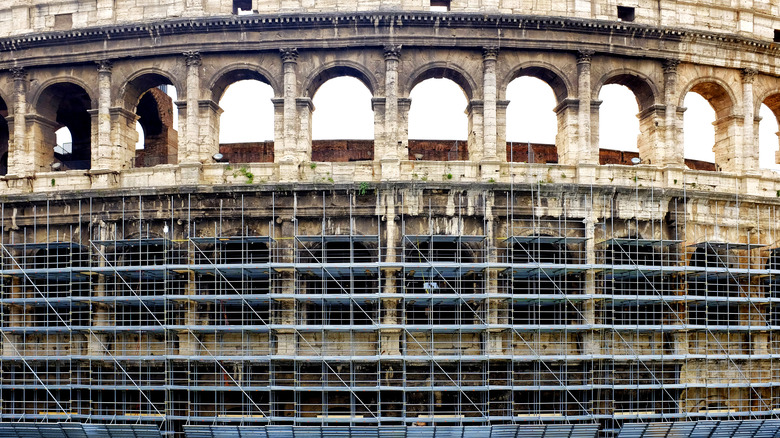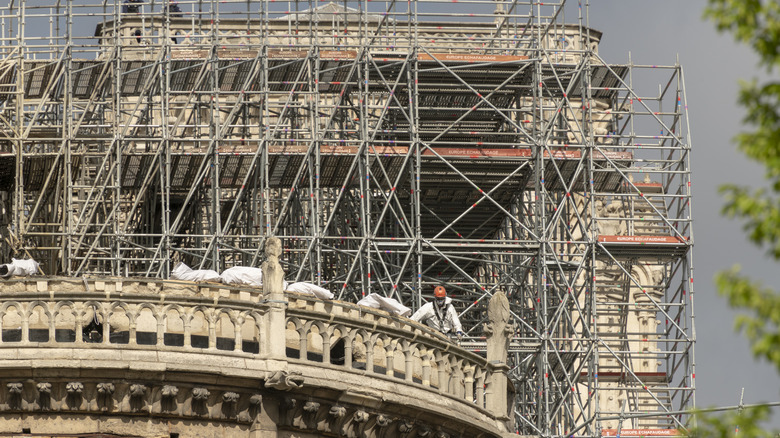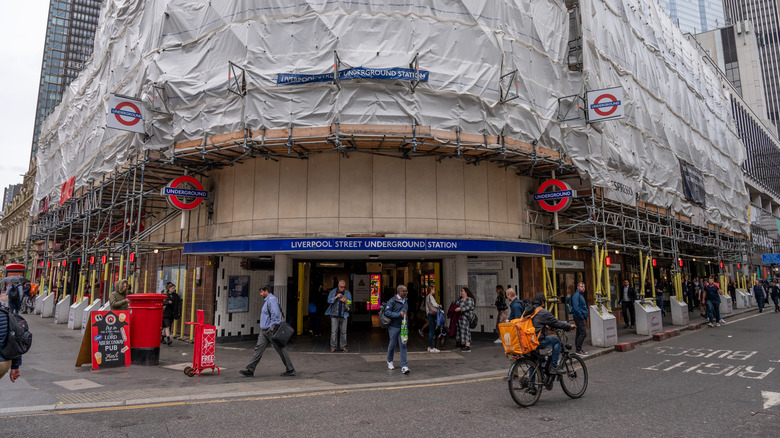The Unavoidable Structure You Should Prepare To Run Into While Visiting European Sites
We often have idealized visions of how a planned trip to Europe will go. It tends to somehow involve quick and easy flights, visits to attractions in which we're the only ones there, and seeing historical monuments and landmarks that are as pristine as the day they were built. Of course, this is rarely the case, but that's certainly no reason to avoid taking your vacation. But outside of delays and crowds, perhaps the most common obstacle you're likely to encounter while sightseeing is also one we tend to forget about the most: scaffolding.
It's perhaps the most seemingly omnipresent structure around the world and can be equally frustrating to both tourists and locals alike. While it seems like historic buildings are everlasting and indestructible, the reality is they are extremely old and are therefore in constant need of repair and restoration. And, unfortunately, that required upkeep is often not going to wait until after your journey.
Scaffolding doesn't have to be a letdown
Keeping these historical structures properly maintained is obviously of the utmost importance so generation after generation can enjoy them. Will that make you feel better when you're staring at an old cathedral covered in plastic and boards? Not necessarily. But it doesn't have to be that bad.
When scaffolding projects are underway, they're often done in a manner designed to maximize visibility and access so visitors can still get a good sense of the place even as they're walking around what is essentially an open-air construction site. Still, it's best to simply mentally prepare for the possibility that scaffolding may be in use when you visit an old building or structure, even if its presence is still ultimately rare. Perfect social media pictures of attractions tend to create the impression that there's never any construction of any sort, so before taking a trip, it's good to adjust your expectations. Even if it prevents you from taking the perfect picture, you'll still likely be able to see and experience most of the site.
Preparing for it
A good approach is to look up the attraction itself online and maybe even give them a call ahead of your trip. Many will inform prospective visitors about the presence of scaffolding and construction, any sections that may be closed off, and how long this will be the case. Knowing this in advance can help you choose where to go, what to visit while you're there, and/or time your trip for when the restoration is finished.
It's also helpful to have other options for your visit. Not every attraction in the area will have scaffolding on it (unless the Olympics are coming), and rounding out your vacation plans with other, already-restored historical sites to spend time at will help alleviate any potential frustration. Scaffolding may be a familiar sight, but seeing it while on a European excursion is still a way better experience than coming across regular scaffolding at home. In the end, seeing the Sistine Chapel in Rome with some construction going on around it is still seeing the Sistine Chapel. It's a great experience either way.


